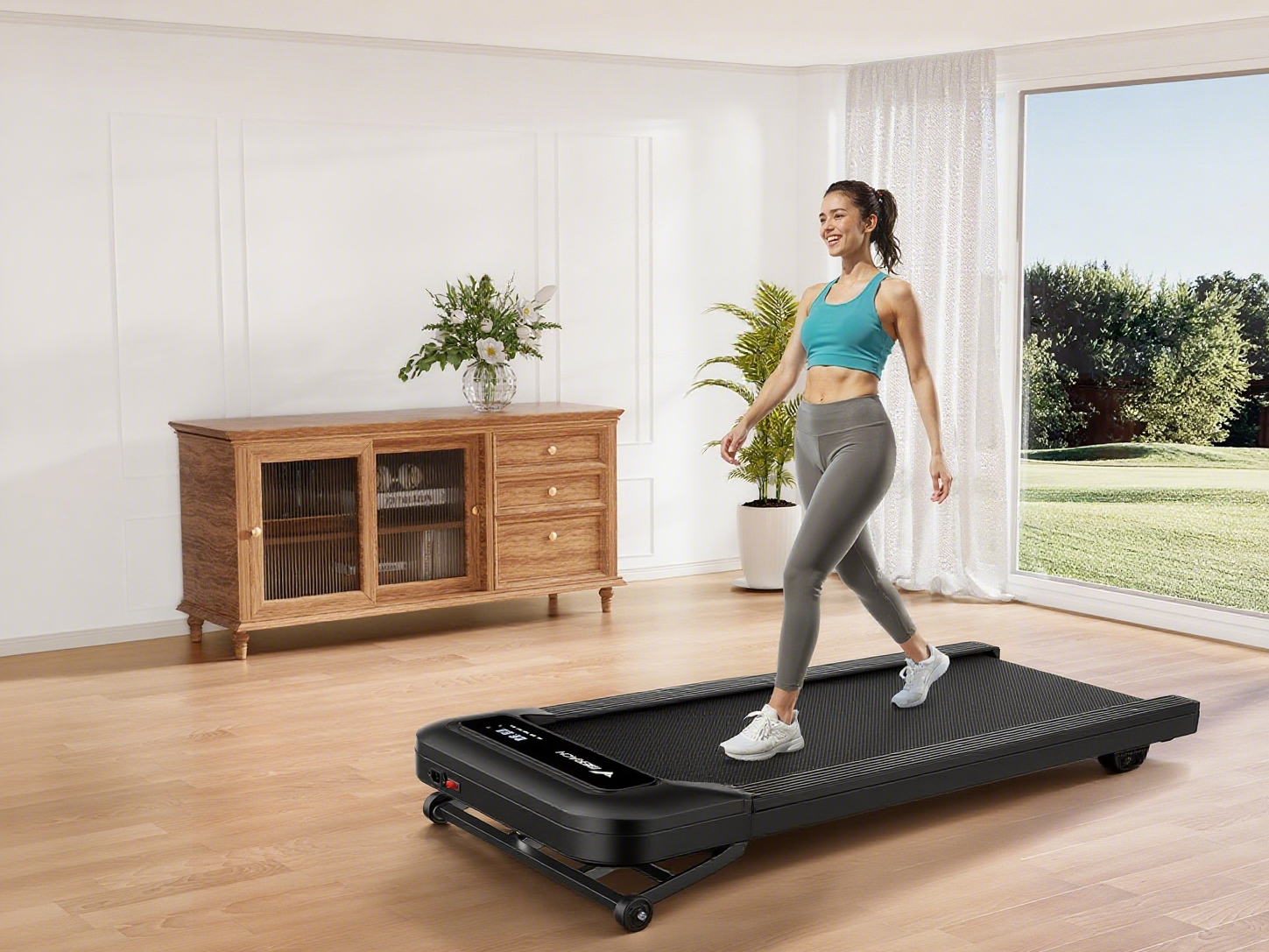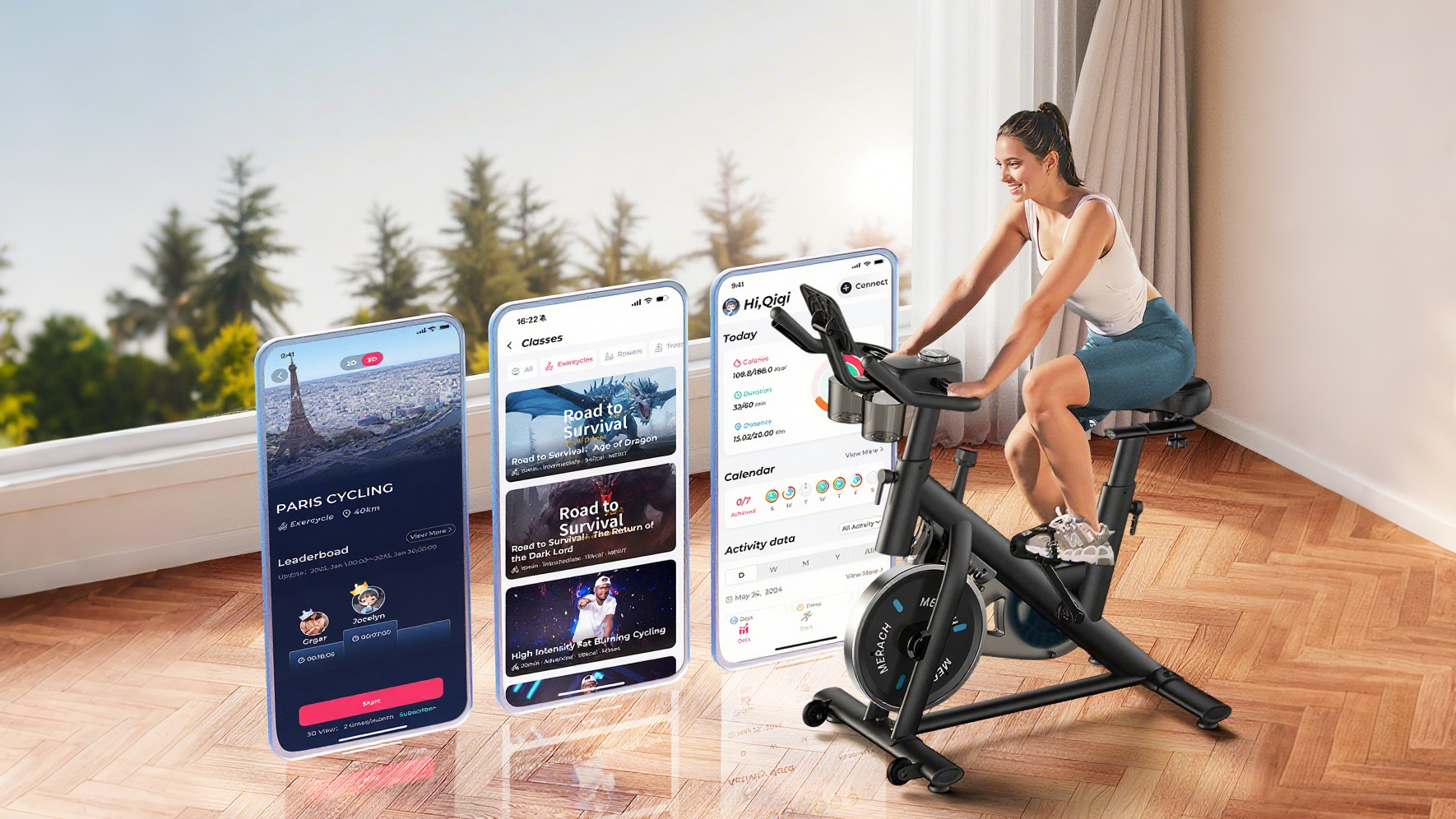Steady-state cardio seems simple enough—just keep moving at a moderate pace for an extended period, right? But despite its straightforward nature, there are several common mistakes that can significantly reduce your results or even lead to injury.
I've seen plenty of people put in the time on treadmills, bikes, and rowing machines without getting the results they deserve. Often, it's because they're making one (or several) of these critical errors during their steady-state sessions.
Here are 8 things you should absolutely avoid doing during your steady-state cardio workouts, plus simple fixes to get you back on track.
1. Going Too Hard (The "Steady-State" That Isn't)
The most common mistake I see is people turning their steady-state cardio into an accidental moderate-intensity interval workout.
The Problem
- Constantly pushing the pace beyond your aerobic zone
- Heart rate fluctuating rather than remaining steady
- Breathing too hard to hold a conversation
- Feeling like you're racing rather than cruising
When you push too hard during steady-state, you're not actually doing steady-state cardio anymore. You've shifted into a more anaerobic workout that can't be sustained for the intended duration and doesn't provide the specific benefits you're after.
Why It Hurts Your Results
- Reduces the fat-burning benefits (your body shifts to using more carbohydrates for fuel)
- Creates excess stress hormone response
- Makes it harder to recover between workouts
- Often leads to cutting sessions short due to fatigue
- Discourages consistency ("that was brutal, I don't want to do it again tomorrow")
The Fix
- Use a heart rate monitor to stay in the 60-70% of max heart rate zone
- Apply the talk test: you should be able to speak in short sentences
- Aim for a perceived exertion of 5-6 out of 10
- When in doubt, go slower than you think you should
Remember: effective steady-state cardio should feel almost disappointingly easy, especially in the first 10-15 minutes. That's actually a sign you're doing it right!
A heart rate monitoring device can be extremely helpful for maintaining the proper intensity.
2. Death-Gripping the Equipment
I frequently see people clutching treadmill rails, elliptical handles, or bike grips like they're hanging on for dear life.
The Problem
- White-knuckle grip on machine handles or rails
- Supporting body weight with arms instead of core and legs
- Hunched shoulders from tension in the upper body
- Reduced natural arm movement (especially on treadmills)
Why It Hurts Your Results
- Significantly reduces calorie burn (by up to 20% in some cases)
- Creates unnecessary tension in shoulders, neck, and upper back
- Prevents proper biomechanics and muscle engagement
- Gives false confidence to use speeds/inclines that are too challenging
- Can lead to repetitive strain injuries in wrists and forearms
The Fix
- Use a light touch or hover hands near (but not on) rails for safety
- If you need rails for balance, reduce the speed/incline to a level where you don't
- Focus on relaxed shoulders and natural arm swing
- On machines like ellipticals where handles are part of the design, hold with a relaxed grip and focus on pushing/pulling with your arms, not supporting weight
If balance is a genuine concern, a recumbent bike might be a better option as it provides stability without encouraging improper form.
3. Neglecting Proper Form
Form matters just as much in cardio as it does in strength training, especially when you're repeating the same movement thousands of times.
The Problem
- Slouched posture and rounded shoulders
- Overstriding (taking steps that are too long)
- Excessive heel striking or toe running
- Knees caving inward during cycling or elliptical strides
- Head jutting forward (especially while looking at screens)
Why It Hurts Your Results
- Increases injury risk through repetitive stress
- Reduces workout efficiency and calorie burn
- Creates muscle imbalances over time
- Often leads to pain that discourages future workouts
- Reinforces poor movement patterns that carry over to daily life
The Fix
- Imagine a string pulling you up from the crown of your head
- Keep shoulders relaxed and down, away from your ears
- Focus on mid-foot strikes when walking/running
- Maintain proper knee alignment (tracking over toes)
- Set up equipment properly for your body dimensions
- Periodically check your form in mirrors or windows
Consider working with a trainer for at least one session to ensure your form is correct on your preferred cardio equipment. Many quality cardio machines are designed to promote better biomechanics.
4. Sticking to the Same Machine and Settings Forever
Doing the exact same steady-state workout day after day is a recipe for plateaus and boredom.
The Problem
- Using the same machine at the same settings for months
- Never changing incline, resistance, or duration
- Falling into autopilot during workouts
- Body adapting completely to the specific demands
Why It Hurts Your Results
- Your body becomes increasingly efficient at the specific movement pattern
- Reduced calorie burn for the same effort over time
- Overuse of the same muscles and joints
- Mental boredom leading to workout avoidance
- Limited overall fitness development
The Fix
- Rotate between 2-3 different cardio modalities weekly
- Gradually increase duration by 5-10% every 2-3 weeks
- Vary the terrain (flat, hills, intervals of higher resistance)
- Try backward movement on equipment that allows it safely
- Change hand positions on machines with handles
If you're limited to home equipment, consider adding a different cardio option like a rowing machine to complement your existing setup.
5. Watching the Clock (Or Numbers) Obsessively
Constantly checking the time or your stats can make steady-state cardio feel like torture.
The Problem
- Checking the time display every minute
- Fixating on calories burned or distance covered
- Countdown-watching that makes time crawl
- Comparing current metrics to your "best" constantly
Why It Hurts Your Results
- Creates psychological stress during what should be a relatively relaxed activity
- Makes sessions feel much longer and more unpleasant
- Encourages pushing too hard to match previous metrics
- Reduces the mental health benefits of steady-state exercise
- Often leads to prematurely ending workouts
The Fix
- Cover the display with a towel occasionally
- Set up entertainment that genuinely captures your attention
- Use time-based audio cues instead (music playlists of specific length)
- Focus on how your body feels rather than the numbers
- Set a timer alarm and don't check until it goes off
Many people find that using an elliptical with entertainment options helps them focus less on the clock and more on their content.
6. Poor Breathing Patterns
Breathing seems automatic, but many people develop inefficient patterns during cardio.
The Problem
- Shallow chest breathing instead of deep diaphragmatic breathing
- Irregular breathing patterns that don't match movement
- Holding breath during more challenging portions
- Breathing exclusively through the mouth
- Gasping or breathing too rapidly for the exercise intensity
Why It Hurts Your Results
- Reduces oxygen delivery to working muscles
- Triggers stress response through rapid, shallow breathing
- Decreases endurance and perceived effort levels
- Can contribute to side stitches and cramps
- Makes it harder to maintain proper steady-state intensity
The Fix
- Practice rhythmic breathing matched to your movement
- Focus on deep belly breathing (stomach expands on inhale)
- Establish comfortable patterns (like inhaling for 3 steps, exhaling for 2)
- Breathe primarily through your nose when possible
- Keep breathing consistent even when approaching hills or challenging sections
Proper breathing takes practice but becomes automatic over time. Try focusing on it specifically for short portions of your workout until it becomes natural.
7. Poor Pre and Post Workout Nutrition
What you eat before and after steady-state cardio can significantly impact both performance and results.
The Problem
- Doing fasted cardio when your body doesn't respond well to it
- Consuming too many calories right before a session
- Overcompensating with excessive post-workout eating
- Not hydrating properly before, during, and after
- Missing the recovery window for proper nutrition
Why It Hurts Your Results
- Suboptimal energy levels during the workout
- Digestive discomfort from poorly timed meals
- Negating the calorie deficit with excessive post-workout eating
- Dehydration reducing performance and recovery
- Missing opportunities for proper muscle glycogen replenishment
The Fix
- Experiment to find what works for your body (some do well with fasted cardio, others don't)
- If eating before, choose easily digestible carbs 1-2 hours prior
- Focus on hydration—drink water before, during (for sessions over 30 minutes), and after
- Plan sensible post-workout nutrition rather than rewarding yourself with high-calorie treats
- Consider timing your workout before a normal meal time
Remember that nutrition needs vary based on workout duration and intensity. A 30-minute light session has different requirements than a 90-minute moderate effort.
8. Letting Technology Ruin Your Workout
While technology can enhance your cardio experience, it can also become a major distraction.
The Problem
- Constantly checking phone notifications
- Stopping to take selfies or post on social media
- Trying to respond to texts or emails while moving
- Spending more time adjusting devices than focusing on the workout
- Getting frustrated with technology issues mid-workout
Why It Hurts Your Results
- Interrupts the steady-state nature of the workout
- Breaks your focus and mind-body connection
- Increases risk of injury due to distraction
- Reduces overall workout quality and effectiveness
- Diminishes the mental health benefits of exercise
The Fix
- Put your phone on "do not disturb" mode during workouts
- Set up entertainment before starting (download podcasts, queue playlists)
- Save social media posts for after completing your session
- Use airplane mode if you're using your phone for music only
- Invest in stable device mounts or built-in entertainment options
Many modern cardio machines include secure tablet holders or integrated screens to minimize technology hassles.
Bonus Mistake: Neglecting Recovery and Complementary Training
While not strictly an "during workout" mistake, this common error significantly impacts your steady-state cardio results.
The Problem
- Doing only steady-state cardio with no strength training
- Not taking recovery days or active recovery sessions
- Pushing through genuine fatigue or developing pain
- Ignoring mobility work and flexibility training
- Failing to progress to more challenging workouts over time
Why It Hurts Your Results
- Risks muscle loss over time (especially without strength training)
- Increases injury risk through overuse
- Limits overall fitness development
- Reduces metabolic benefits that come from varied training
- Often leads to frustrating plateaus
The Fix
- Include 2-3 strength training sessions weekly alongside cardio
- Schedule deliberate recovery days or active recovery sessions
- Listen to your body—soreness is normal, pain is not
- Add mobility work to maintain or improve range of motion
- Gradually introduce new challenges (like gentle intervals or hills)
A balanced approach that includes strength training equipment alongside your cardio routine delivers the best overall fitness results.
Key Takeaways: Setting Yourself Up for Steady-State Success
To avoid these common mistakes and get the most from your steady-state cardio:
- Understand the purpose: Steady-state is meant to be sustainable, not grueling
- Focus on form: Quality movement patterns prevent injury and enhance results
- Embrace variety: Different machines, settings, and durations keep progress coming
- Mind your mind: The mental approach matters just as much as the physical
- Support with nutrition: Fuel appropriately for your specific workout demands
- Minimize distractions: Create an environment that supports focus and flow
- Balance your training: Complement cardio with strength and mobility work
- Be consistent: Regular, moderate sessions beat occasional all-out efforts
Finding Your Personal Steady-State Sweet Spot
The optimal steady-state cardio approach varies from person to person. Experiment to find what works best for you:
- Best time of day: Morning, lunch break, or evening based on your energy patterns
- Optimal duration: 20 minutes might be perfect for some, while others thrive on 45-60 minutes
- Preferred equipment: Treadmill, elliptical, bike, rower, or outdoor options
- Entertainment needs: Music, podcasts, TV shows, or mindful focus
- Solo vs. social: Some perform better alone, others with partners or groups
- Environment: Home, gym, outdoors, or a mix of settings
There's no one-size-fits-all approach to steady-state cardio. The "best" workout is ultimately the one you'll do consistently with proper form and appropriate intensity.
Final Thoughts: The Power of Getting the Basics Right
Steady-state cardio isn't complicated, but it's easy to make these common mistakes that undermine your results. By avoiding these pitfalls and focusing on quality over quantity, you'll experience greater fat loss, improved endurance, better heart health, and enhanced overall fitness.
Remember that steady-state cardio isn't meant to be a constant struggle—it should be challenging enough to provide benefits but comfortable enough to be sustainable. When done correctly, it becomes not just something you endure, but something you actually look forward to as part of your regular routine.
What steady-state cardio mistakes have you noticed in your own workouts? I'd love to hear about your experiences in the comments below!































Leave a comment
This site is protected by hCaptcha and the hCaptcha Privacy Policy and Terms of Service apply.